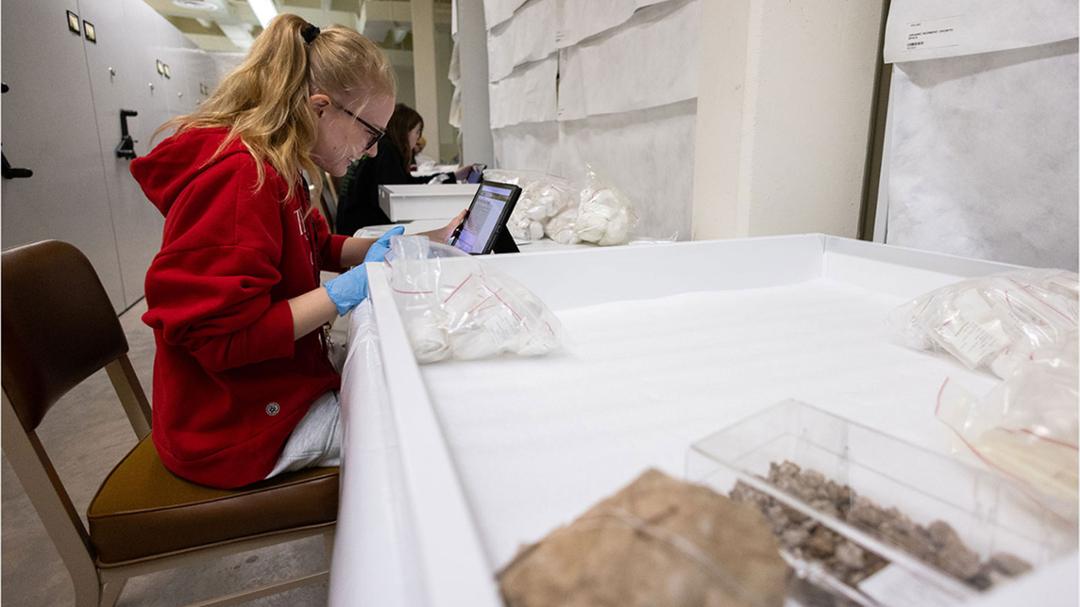The program is one of the oldest in the country and is set to continue its trailblazing legacy for another half-century.
The Heritage and Museum Sciences (HMS) program at Texas Tech University turned 50 years old in 2024. The program started in response to two key factors. The first was the museum field beginning to lean into collections management policy in the late 1960s and early ‘70s. The second was the American Association of Museums (now the American Alliance of Museums) creating an accreditation program to help support museums.
Craig Black came to Texas Tech in 1972 to take on a new position as director of the Museum of Texas Tech University and to start the HMS program. Black brought Eileen Johnson, one of his doctoral students at the time, with him to Texas Tech.
“The time was right to develop a program for educating museum professionals,” said Johnson, who is the current chair of the HMS program. “The goal was to move the profession to the next level. We’re one of the oldest programs in the nation doing this work.”
Johnson believes what has set the HMS program apart from similar programs across the nation is the Museum of Texas Tech.
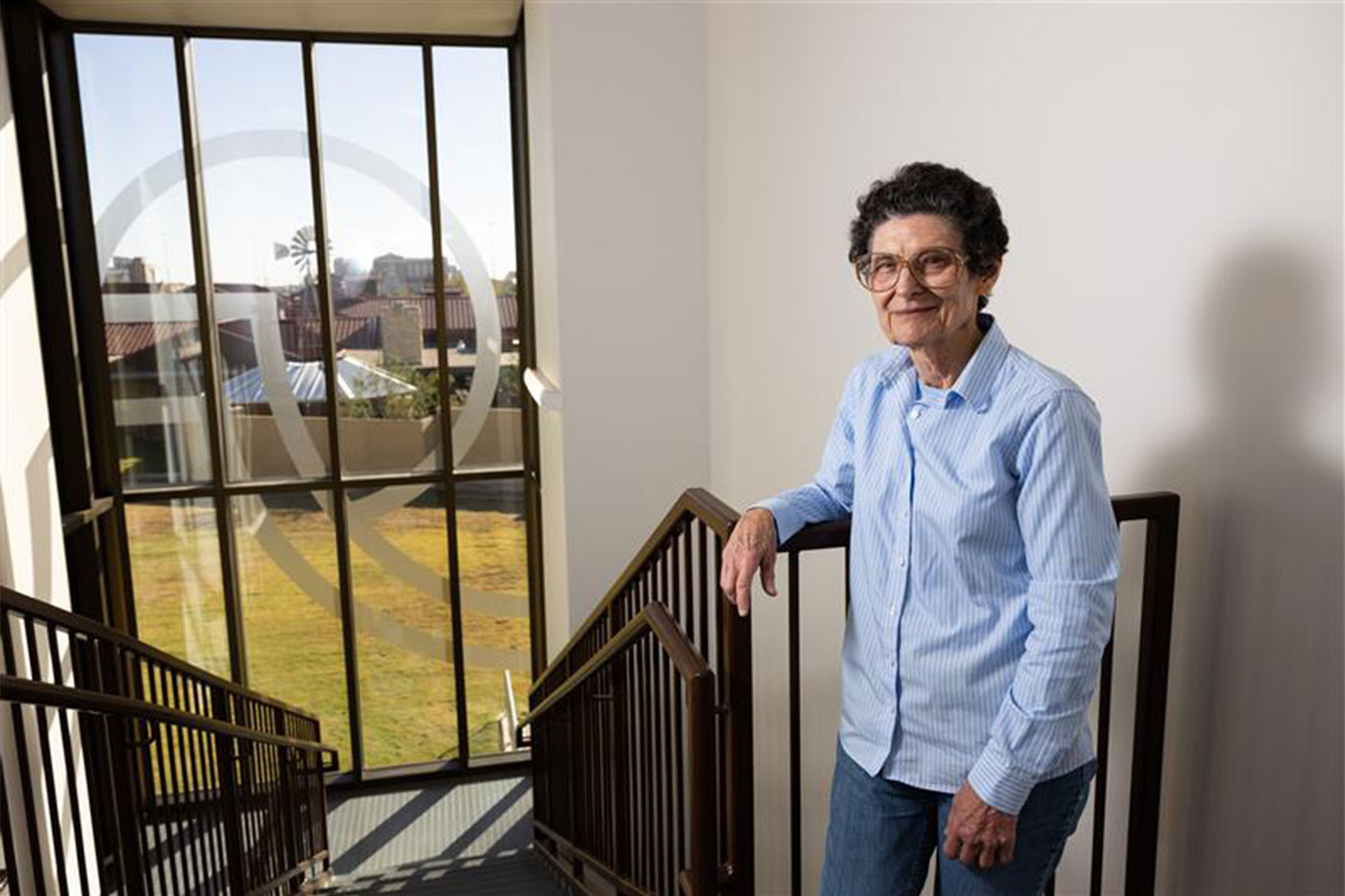
Like a Swiss Army Knife that has numerous tools for a variety of needs, the Museum of Texas Tech is a multidisciplinary institution comprising a wide range of areas including anthropology, art, clothing and textiles, history, paleontology and natural history.
While other programs have access to museums and professionals, none work as closely as the HMS program does with the museum.
Johnson, who recently celebrated her 50-year anniversary at Texas Tech, is a key connecting point for this relationship. Not only is she chair of the HMS program, but she is also director of Lubbock Lake Landmark, senior curator of anthropology at the museum and a Horn Distinguished Professor.
“The opportunities are very much integrated and built into the program,” Johnson said. “The museum curatorial staff look forward to having the students in the collections every year because the students are doing serious collections work. They are contributing from day one.”
During the first year, students complete a year-long apprenticeship at the museum. They spend time in each area of the museum – curatorial, exhibits, education, heritage and administration – to gain valuable hands-on experience. This apprenticeship is an ideal way to introduce museum and heritage studies to students who may be unfamiliar with the area.
“One thing we encourage is for students to give themselves a chance to experiment and try things they maybe haven’t tried before,” said Sally Shelton, associate chair and graduate adviser of the HMS program. “There’s an incredible range of things you can do in a museum, and I really love it when I see students just hit something that they didn't know they were going to love.”
As students progress into their second year, they can gain additional hands-on experience through full-time paid internships or explore research topics by completing a thesis project.
“It’s important for students to engage in research and publishing, which wasn’t an aspect of our program originally,” Johnson said. “I welcome the shift that Texas Tech has taken to prioritize research and its aspirations of becoming an AAU member.”
The Association of American Universities (AAU) is an organization of American research universities devoted to maintaining a strong system of academic research and education. Currently, 71 universities across the country are members.
Johnson and Shelton expressed similar points of pride and continued hopes for the next half-century.
“Students are doing things they never thought they could do – things they didn’t even think about or know about,” Shelton said. “They all come in and start at basically the same point, but then go in so many directions.”
The program has a 92% placement rate for its alumni who enter the job market, and they secure positions within six months after graduating.
“What our students are finding now is they’re highly competitive,” Johnson said. “They hit the ground running and don’t have to be trained for the job.”
In celebration of its 50-year anniversary, here is a small sampling of the people (past and present) who have been impacted by the HMS program and continue to build the program’s legacy.
Rick Young – 1985 Graduate
Director, Fort Caspar Museum (Casper, Wyoming)
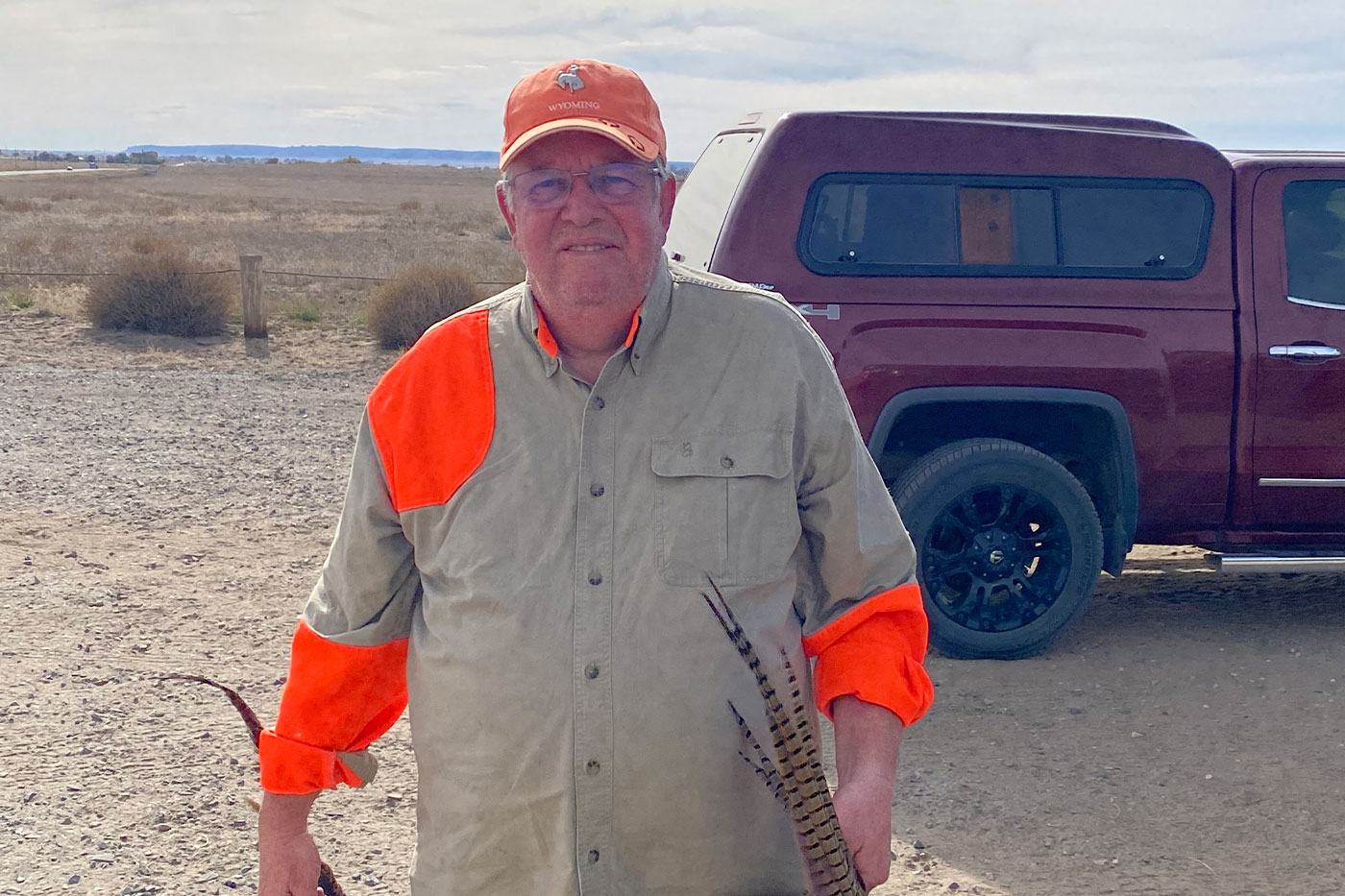
Rick Young came to the HMS program after completing a bachelor’s degree in historical preservation from Southeast Missouri State University.
“The HMS program was incredible, even at that time,” recalled Young. “I walked out of there with two years of hands-on experience, working in museums. It really gave you a leg up when you’re trying to get that first job.”
Now, as a director, Young sees his time at the HMS program continuing to impact his work today.
“The program gives you the confidence to come up with new programming and fun ideas,” said Young. “We do a Christmas candlelight event down at the historic site here. I brought that idea here from Tech.”
Young still finds ways to connect with HMS alumni and current students. At a recent Mountain-Plains Museums Association meeting, Young attended a Texas Tech get-together.
“I ended up being the oldest alum in the room, but I got to visit with a lot of the students. They wanted to know what I’m doing, and a couple of them asked me for advice on a bunch of things. It’s great that we have this strong Texas Tech bond.”
That bond, Young said, starts the moment a student begins the HMS program.
“I really appreciated the camaraderie among the first- and second-year students,” said Young. “But there was also the approachability and connection you had with the professors. You worked closely with them, and they actually cared about you.”
Nichole Alton – Second-Year Student
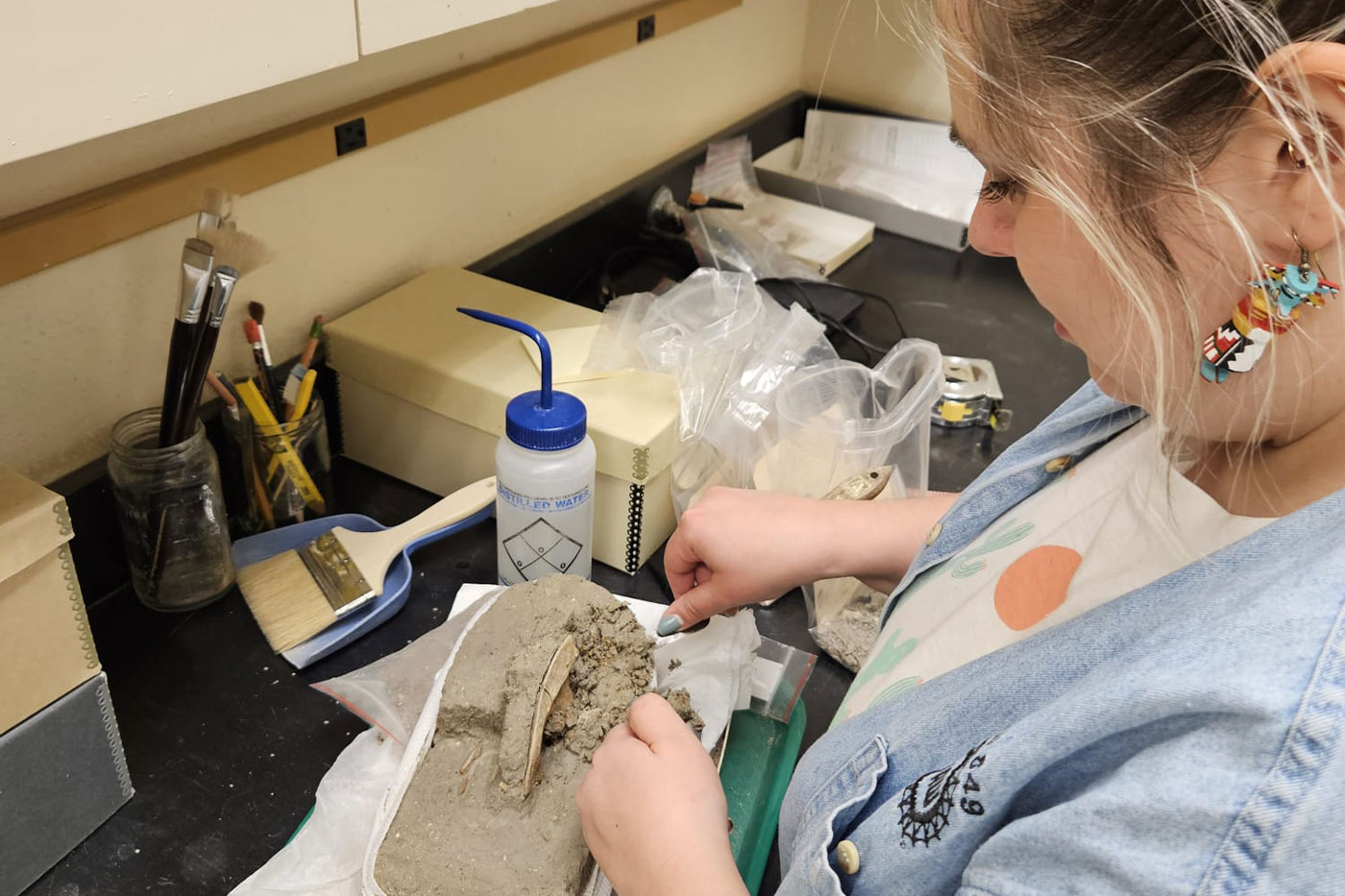
Nichole Alton graduated from Eastern Michigan University with a bachelor’s degree in anthropology in 2018. Prior to starting the HMS program at Texas Tech in 2023, Alton worked at the Natural History Museum at the University of Michigan.
“I thought I had a lot of experience working in a museum,” said Alton. “Coming here, I was surprised how much I did not know. I was working as a docent and not necessarily as interested in our collections management policy. But now, after my core classes here, I know how vital that is.”
Alton works as a research assistant and is completing her thesis project. She hopes to earn her doctoral degree but sees the program setting her up for several potential paths.
“I feel like I could work in an art or anthropology museum,” Alton said. “I could be an archaeologist. I feel confident that I could go anywhere and do well.”
A large part of that confidence comes from Alton’s interactions with the HMS program’s alumni.
She, like Young, attended the Mountain-Plains Museums Association Meeting and spoke with various alumni.
“I’ve been very lucky with finding this program,” Alton said. “I like to think I’m a brave person, but having this alumni community in the background to support me has been amazing. The alumni stay in contact, and it’s just a good community to be a part of.”
Patti Wood Finkle – 2009 Graduate
Curator, Earth and Mineral Sciences Museum and Art Gallery, Pennsylvania State University (University Park, Pennsylvania)
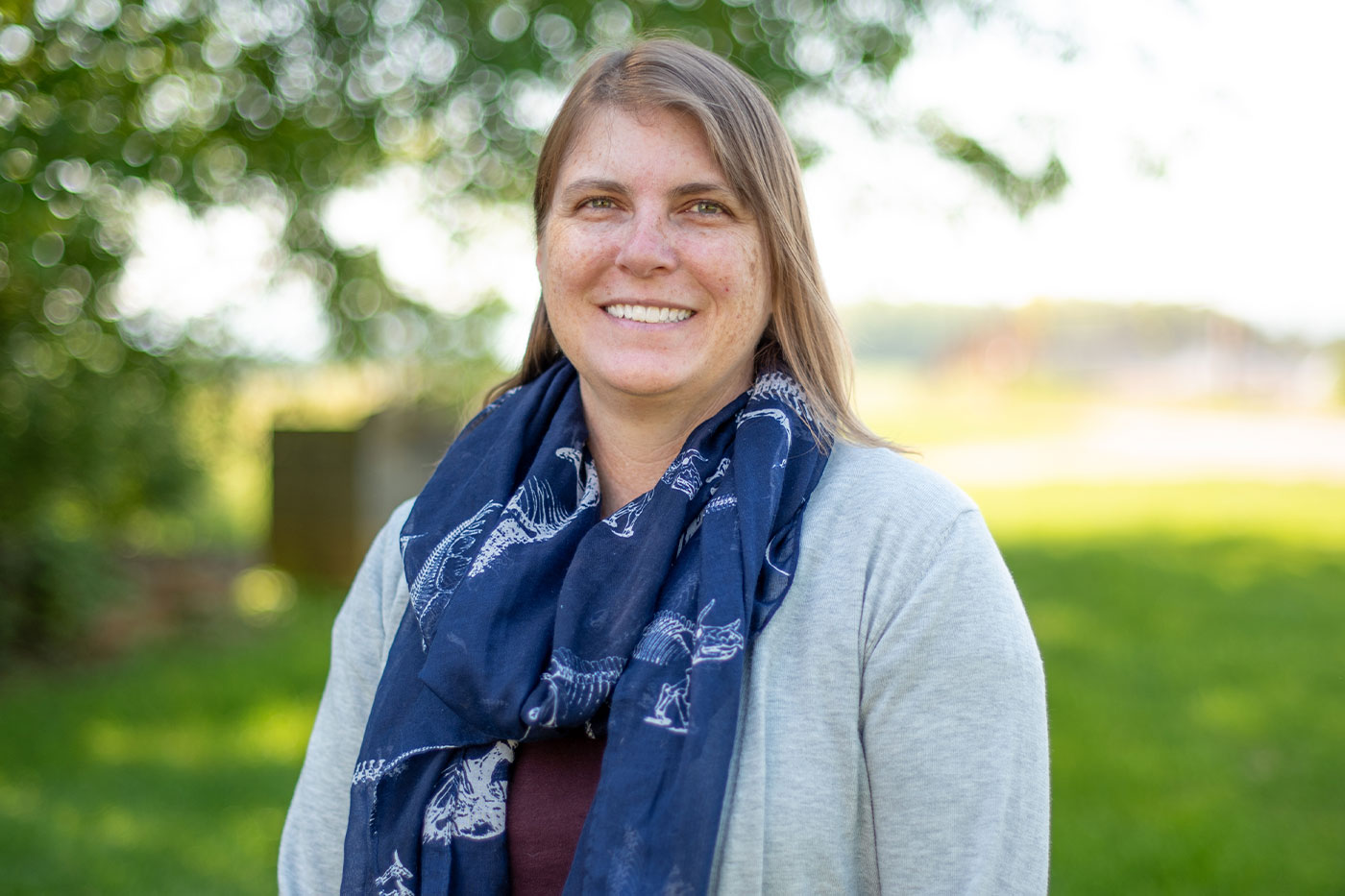
Patti Wood Finkle joined the HMS program in 2007. As a non-traditional student with two young kids, Finkle loved how family-friendly the program was.
“My oldest daughter was 7 or 8 at the time, and she was like our test subject for all of the kids’ programs for the two years I was there,” Finkle said.
Finkle stressed the personal approach the program took with her as a student. It wasn’t about Finkle fitting into the mold of a museum worker, but instead creating an environment for her to thrive in whatever museum or heritage space she would enter.
“It’s a fantastic program that gives you the tools needed to do any job in the museum,” she said. “It’s not just curation or education focused. This program really gives you a well-rounded view of the museum world.”
Finkle credits the HMS program for shaping how she searches for and works with interns at Penn State.
"I employ students from all different majors for all different kinds of projects,” Finkle said. “That was something I picked up at Texas Tech. I try to give the students more than just an experience with the objects or with building exhibits. I’m trying build off what we have here.”
Lee Harris – First-Year Student
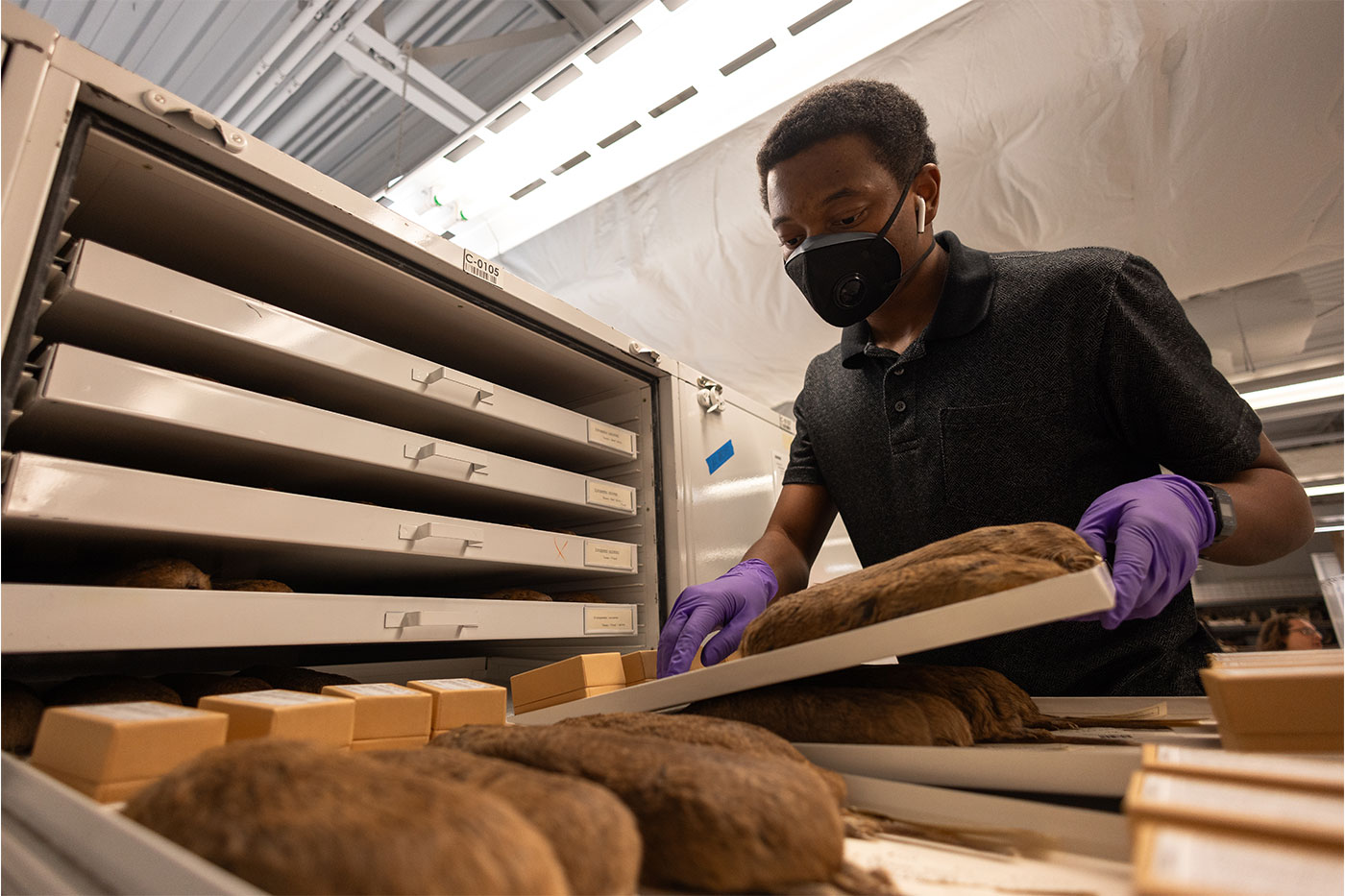
Lee Harris wants to blend his interest in insect conservation with his fondness for hands-on work, and he sees no better environment to do that than a museum.
“I want to be a collections curator, especially with insects,” Harris said about why he joined the HMS program. “Conservation is really important to me. Working as a collections curator is one way I can help to save the species we currently have.”
Harris earned a bachelor’s degree from Tarleton State University in wildlife sustainability and ecosystems management with a minor in entomology. Before joining the HMS program, he curated a small, personal collection of insects.
Harris was a little hesitant to apply to the program – he wanted to stay closer to his home. But Harris soon noticed that the people in the HMS program genuinely seemed to care about his interests and success.
“I met Jennifer Girón through a mentor, and she was super eager to help me out,” Harris said. Girón is the curator of invertebrate zoology collection at the museum. “Now that I’m here, she has me sorting weevils and looking at taxonomic keys. It’s been great. I go after class and just clear my mind and think about bugs and weevils. It gives me space to relax.”
Harris also appreciated the emphasis on paid internship opportunities of the HMS program.
“Something like that shows they’re serious – like they actually do care and see you as a person whose work deserves payment,” Harris said. “I realized I’m in good hands here.”
Ryan Painter – 2015 Graduate
Director, Exhibits and Facilities at the National Museum of Nuclear Science and History (Albuquerque, New Mexico)
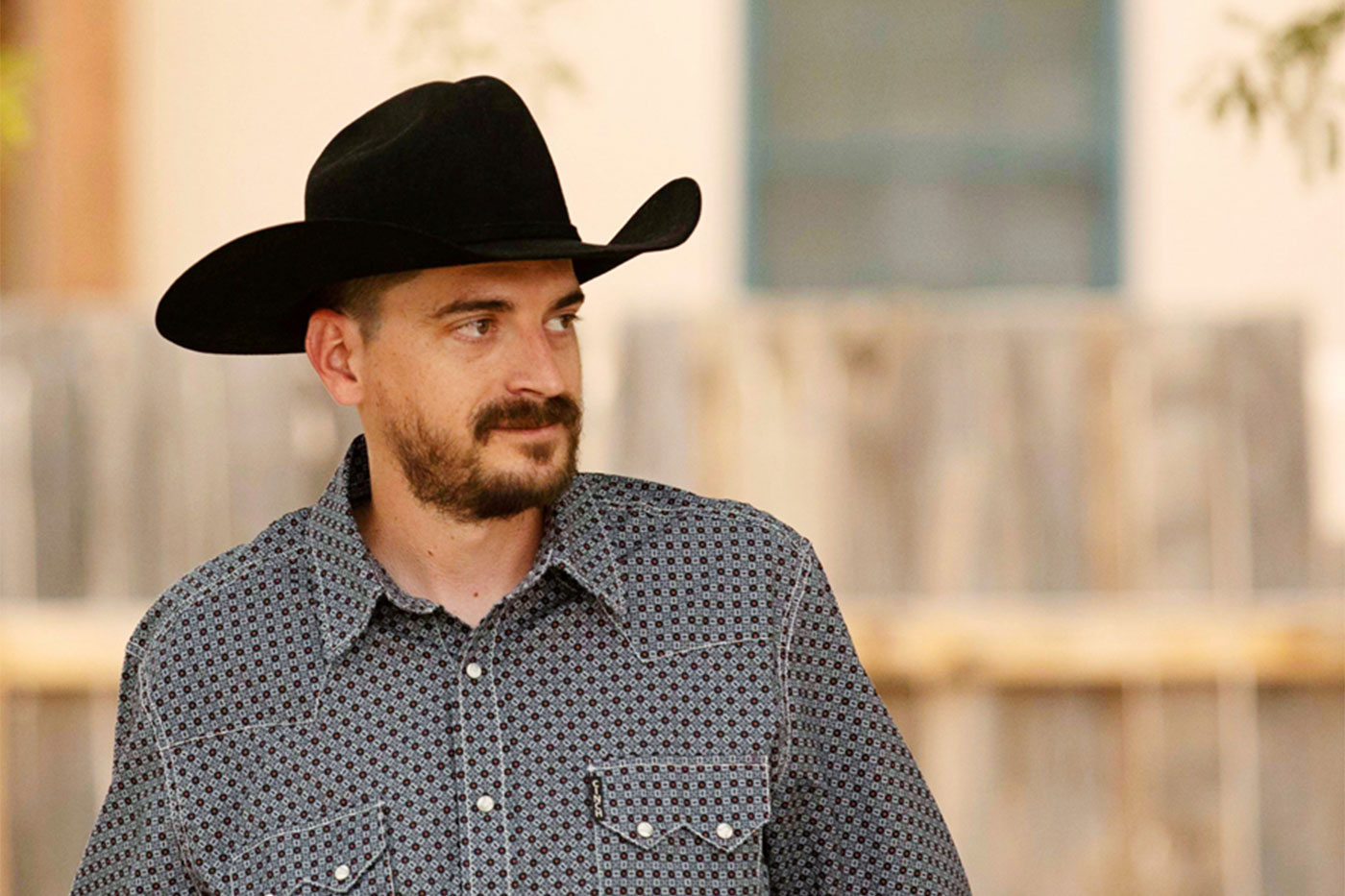
Texas Tech has been a major part of Ryan Painter’s family – both of his parents graduated from the university. It was Painter’s mother who first brought up the HMS program after Painter earned his history degree from New Mexico State University.
“On a whim, I visited with the team here and then soon applied for the program,” said Painter. “I had no idea what was in store and how intense the program would be.”
Painter was more than up for the challenge and developed a passion for exhibition work while in the HMS program. He hasn’t ruled out taking on director roles, but the hands-on aspect of the HMS program is something he thoroughly enjoys and looks to replicate with his work.
Painter secured a role as an exhibit technician with the National Museum of Nuclear Science and History weeks before graduation.
“Without the program, I would have been completely out of my depth in this new position,” recalled Painter. “I was confident and knowledgeable in what I was doing. It was a seamless transition, and I was able to get to work immediately.”
Painter has since designed and built dozens of exhibitions, some of which had him erecting rockets or painting and assembling airplanes.
Jonathan Decker – Second-Year Student
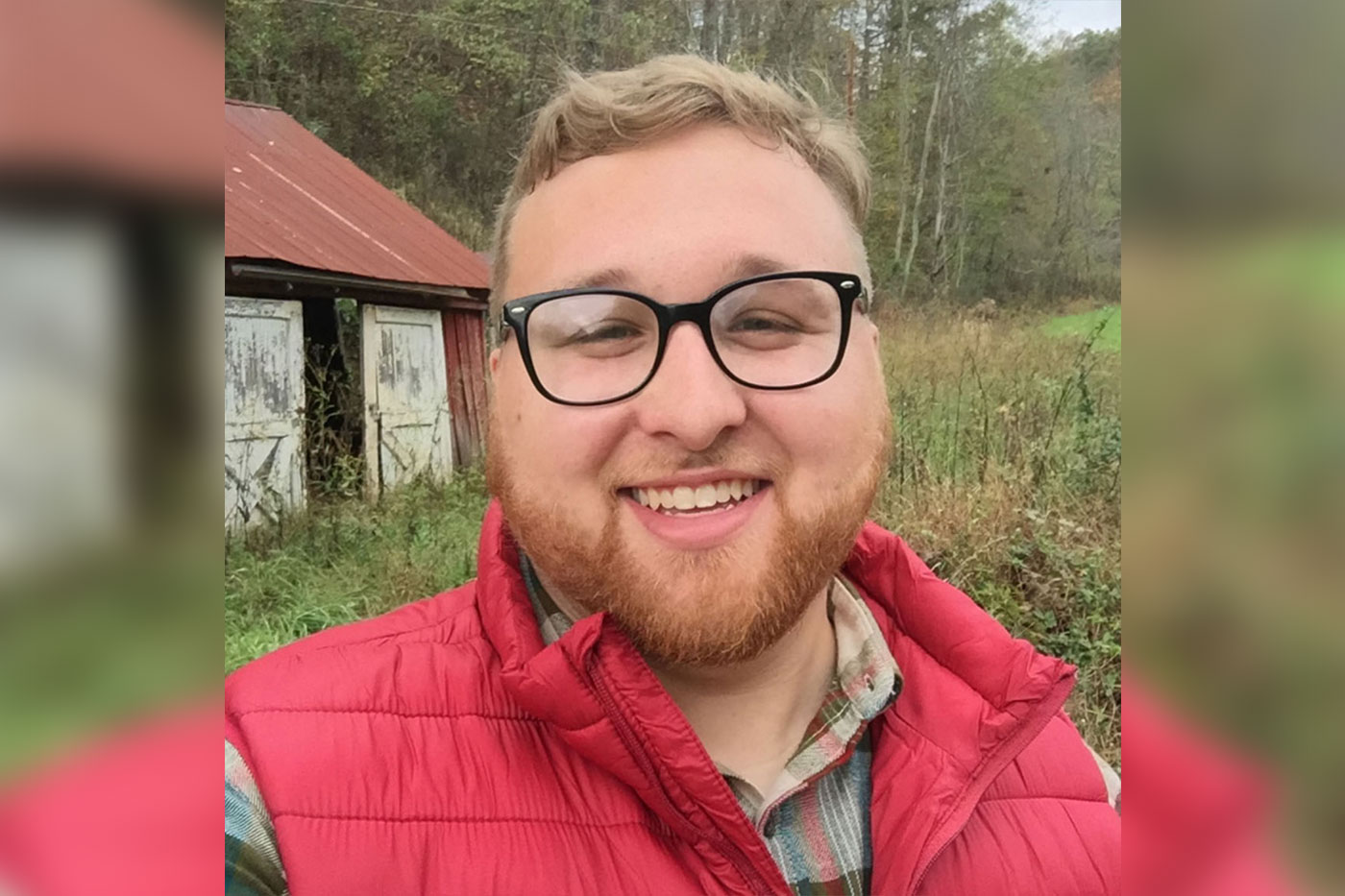
Jonathan Decker knew from an early age that he wanted to work in a museum, but he wasn’t sure how best to break into the field. After earning a bachelor’s degree in history from Marshall University and spending a few years substitute teaching, Decker joined the HMS program in 2023.
“This program really does set the standard for all other museum programs,” Decker said. “The fact that you get to work in a museum under the professors and you get to learn from them in the classroom as well is phenomenal.”
Decker serves as president of the Museum Heritage Student Association (MHSA). He views MHSA as an ideal complement to the academic offerings of the HMS program. MHSA has given Decker the opportunity to connect with museum donors and directors to better understand the goals people set with different exhibits or collections.
Decker hopes to become a curator at The Smithsonian’s National Air and Space Museum, and he has an internship lined up with the National Museum of the United States Air Force. He’s had a passion for military history and is eager to blend his interests with a career.
Decker feels confident that the HMS program can help students connect their interests with museums just as it has for him.
“You don’t just have to focus on one discipline,” Decker said. “You can focus on multiple and learn how to care for objects and how to interpret them in exhibits to help educate people.”
Col. Andrew Scott DeJesse – 2018 Graduate
Instructor, Texas Tech University
U.S. Army Senior Heritage and Preservation Officer for the U.S Department of State
(Washington, D.C.)
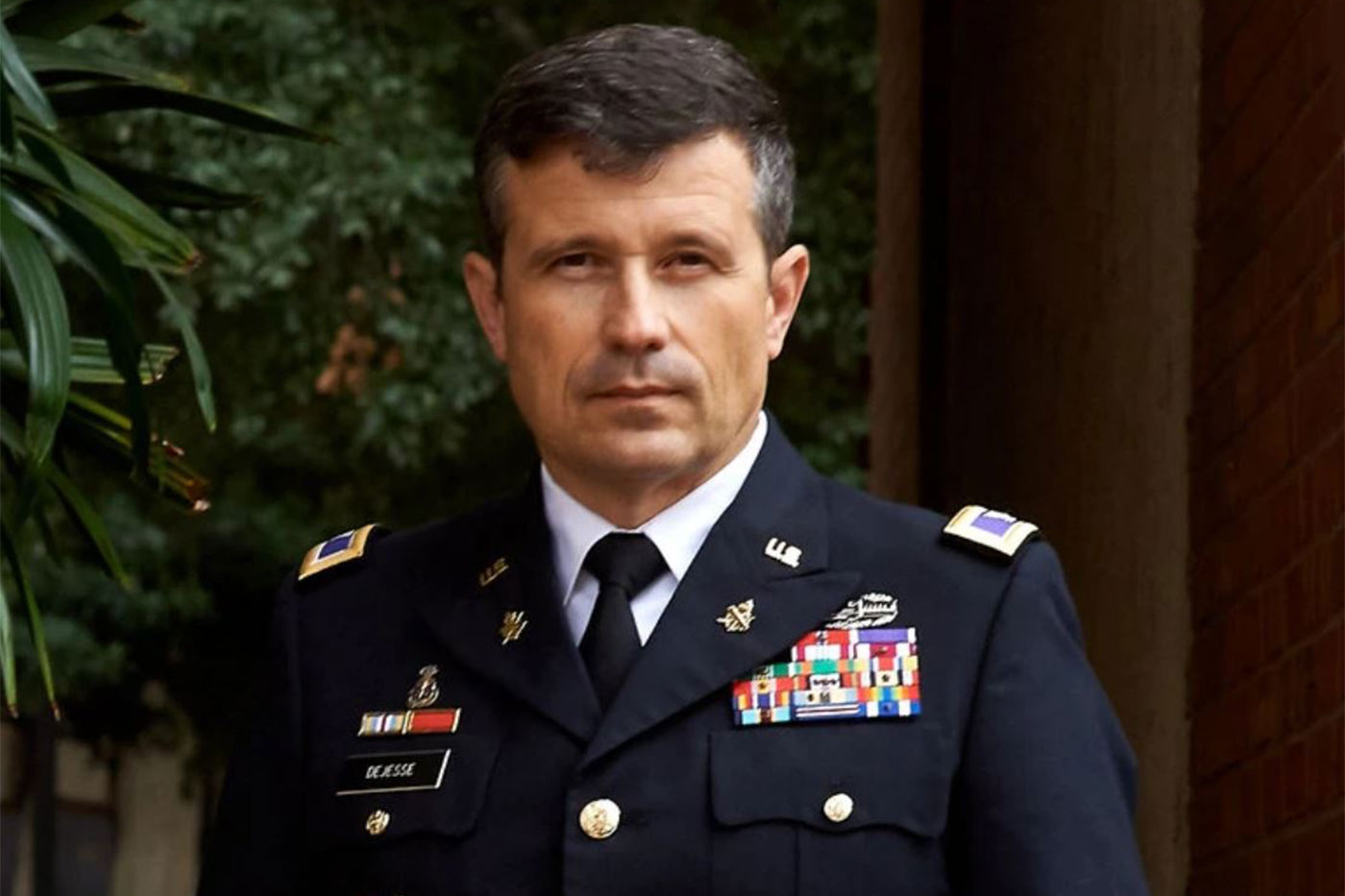
Col. Andrew Scott DeJesse was on deployment in Afghanistan in 2014 when he began searching for museum and heritage programs. He had attended the Naval Postgraduate School and earned two graduate certificates, so a master’s degree seemed like the next logical step.
“My research was focused on how cultural heritage and art impacts the environment and how you can measure what’s happening in the environment,” DeJesse said.
DeJesse entered the HMS program with more experience than just his past research; he served in the military as part of the new generation of Monuments Men and Women, protecting heritage sites and recovering major art works across Afghanistan.
“I showed up to Texas Tech with operational experience in the effects of cultural heritage and the need to protect it,” DeJesse said. “I came here for the theory, and the faculty offered me opportunities for exploring innovative ideas and closing gaps in research.”
DeJesse completed his thesis project on provenance research, which examines the history of an object’s ownership.
Today, DeJesse splits his time in several directions. For his military responsibilities, he serves as the 38G program director and leads U.S. Army efforts to develop Heritage & Preservation Officer capabilities.
DeJesse also has been a faculty instructor for the HMS program since 2021, teaching a course on provenance research.
“We look at specific issues relating to social instability,” DeJesse said about his course. “When instability occurs, one of the first things that gets targeted is cultural heritage. We’re here to right a wrong and see how we can build ethical behavior into that environment.”
DeJesse takes pride in helping students concentrate their passion and motivation for museum and heritage work.
“I tell the students, they have to have their why,” DeJesse said about one of the last sessions in his course. “If you want to go after the things that are tackling heavier problems, you have to be driven. You have to use your imagination. Maybe you have to write grants or propose this or that. Maybe you set up your own nonprofit. It’s about opening their eyes a little bit to the potential that’s out there.”
Chloe Erwin – First-Year Student
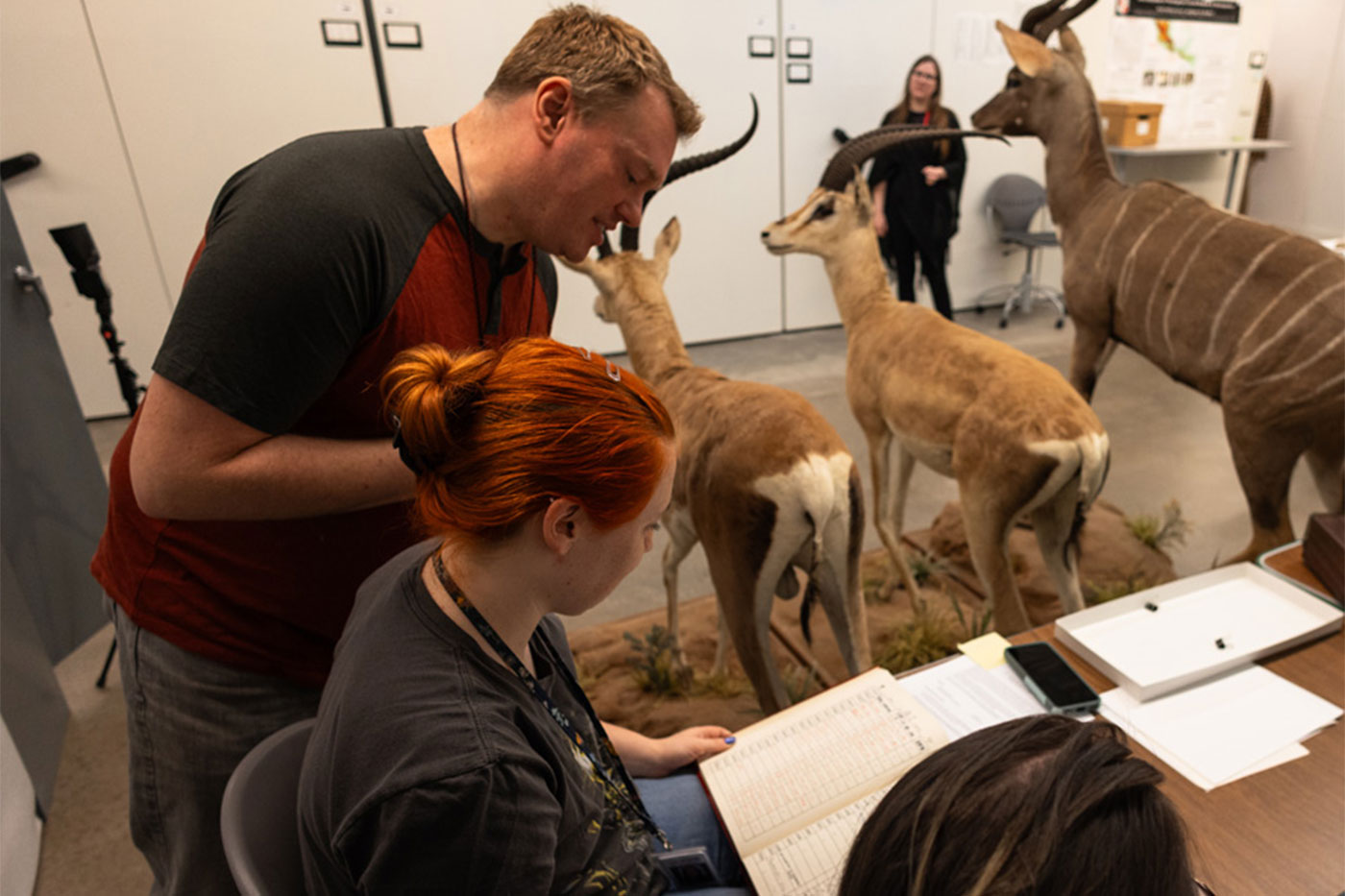
Chloe Erwin sees her eventual career as a way for her to right the wrongs of Spanish colonialism.
“With my family history – we were Spanish colonial people – I feel drawn to repairing the relationships that were broken down by colonialism,” said Erwin. “I want to find ways to help Indigenous people.”
A second-generation Red Raider, Erwin earned her bachelor’s degree in classics and wrote an honors thesis on the intersection of Spanish colonialism and how explorers used classical texts to describe Indigenous people.
Erwin sees this first semester as building the foundation for the rest of her career.
In one of her courses taught by Department Chair Johnson, Erwin is learning the history of artifact cataloging.
“Getting to work in the anthropology collections as part of the course and seeing all of the bones collected in the 1970s and ‘80s has been cool,” said Erwin. “These things were collected before many of the laws we now abide by were created.
“It’s interesting to see how very little was documented back then versus all of the fields I have to fill out now. One of the drawers I worked with had 12 rib segments, all with the same number. That would be unheard of now.”
Erwin wants to pair the classroom experience with an internship at Crow Canyon Archaeological Center in Cortez, Colorado. There, she hopes to work with Indigenous tribe members to understand how museums can best benefit them. A first step toward her meaningful goal.
Zachary Garrett – 2022 Graduate
Coordinator, Native American Graves Protection and Repatriation Act (NAGPRA) at University of Tennessee (Knoxville, Tennessee)
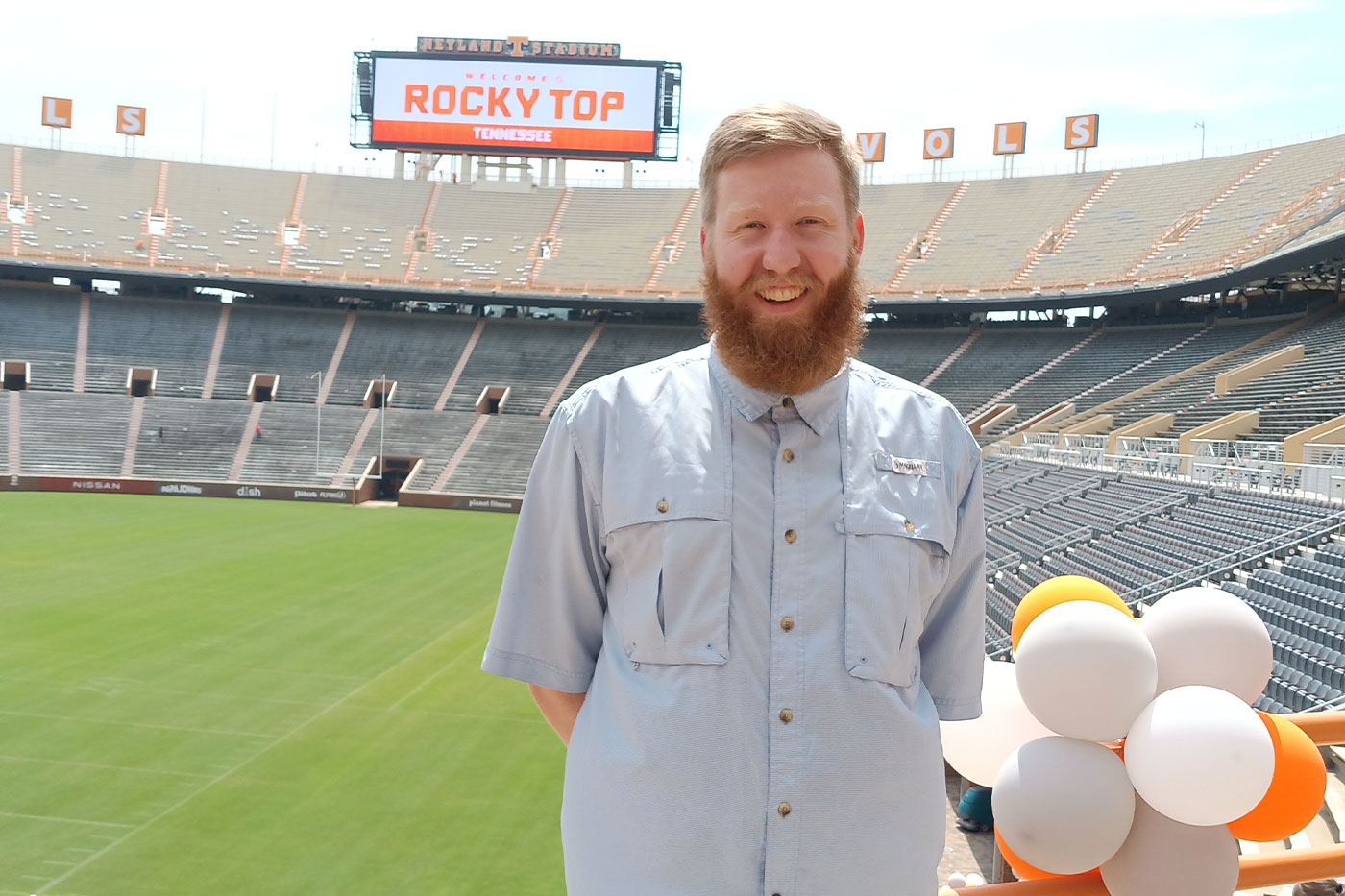
Zachary Garrett came to the HMS program after earning his anthropology degree with a minor in Native American studies from Utah State University.
“I was looking at a couple of schools, but Texas Tech just had the best quality and financial support I needed,” Garrett said. “The program really stood out based on where alumni had been placed and the work they were doing.”
Garrett became interested in working with Native populations as a child growing up in Kennewick, Washington. For over 20 years, there was a complicated legal battle over a 9,000-year-old set of Native American ancestral human remains “The Ancient One.” Local Native American tribes knew the remains were their ancestor, and the U.S. Army Corps of Engineers would eventually confirm that the bones were genetically linked to modern-day Native Americans. This ended the legal battle, allowing the Tribes to respectfully rebury “The Ancient One.”
“I remember hearing about that as a kid, and it was big news in my hometown,” Garrett said. “That always stuck with me, and when I got to Tech, I started to learn more about NAGPRA and its importance to the museum world.
“In some classes, I was allowed to focus my research on what interested me the most. I really wanted to learn about NAGPRA and how it could be improved.”
Now, Garrett spends his time building partnerships and relationships between the university and Native Nations. Still, Garrett remembers what it was like to enter the job search with the confidence that comes from knowing your program is one of the best in the country.
“I’m all about learning and higher education, but I was really interested in getting a job in the museum field,” Garrett recalled. “There are no guarantees in life or in the field, but Tech has good connections to some of these employers – not just in the Mountain Plains region, but in the United States in general – so there’s a lot of familiarity with Tech’s program.”

